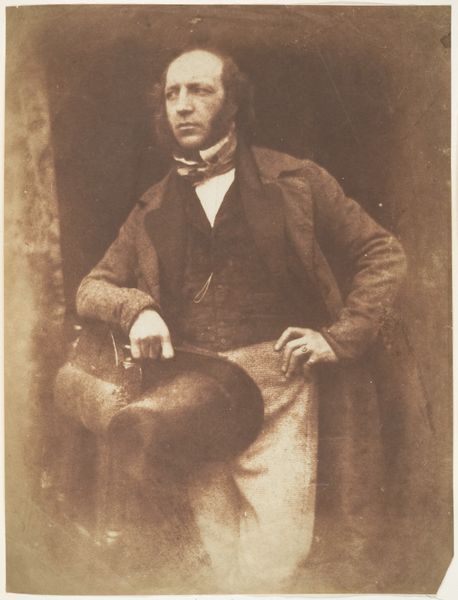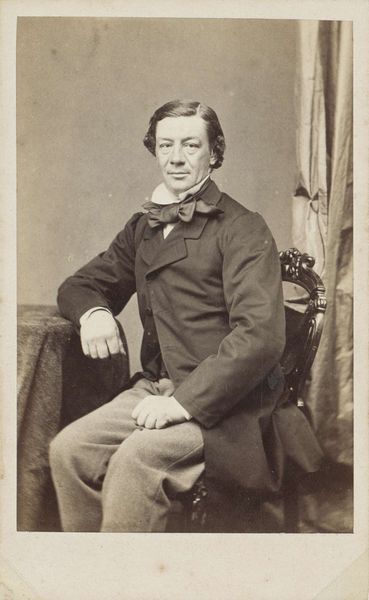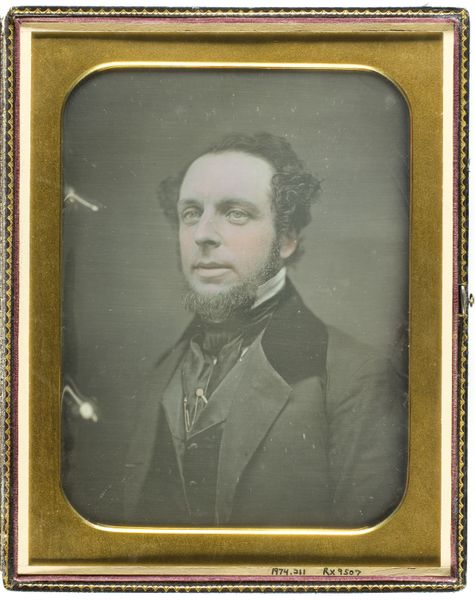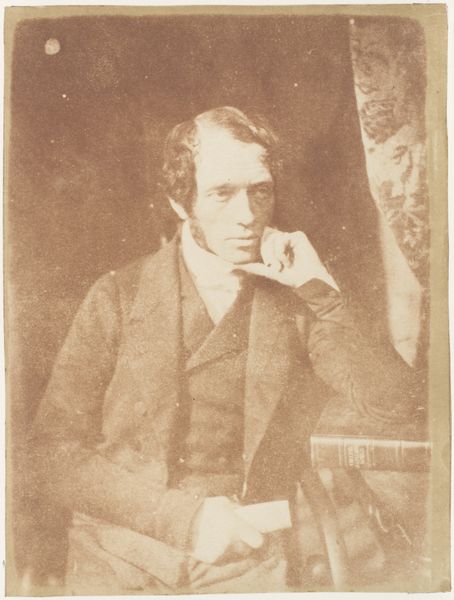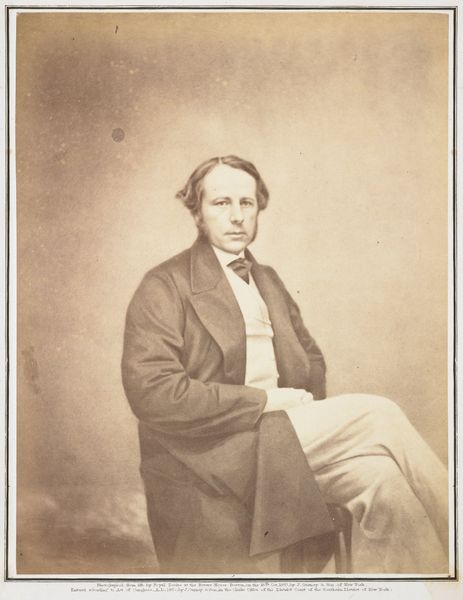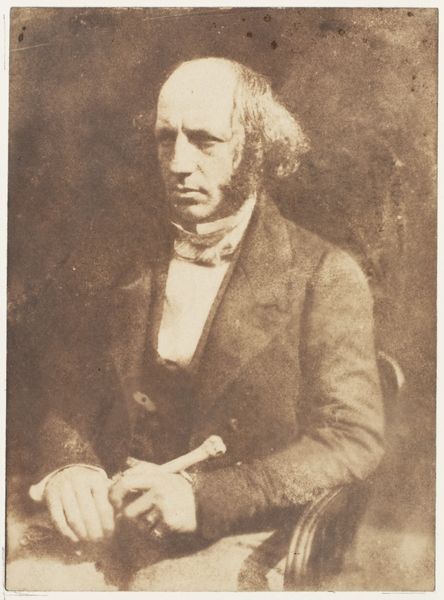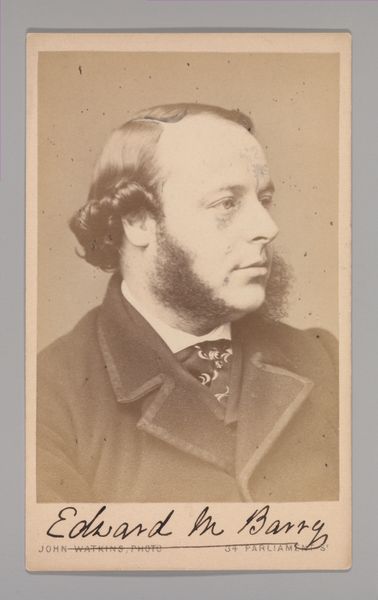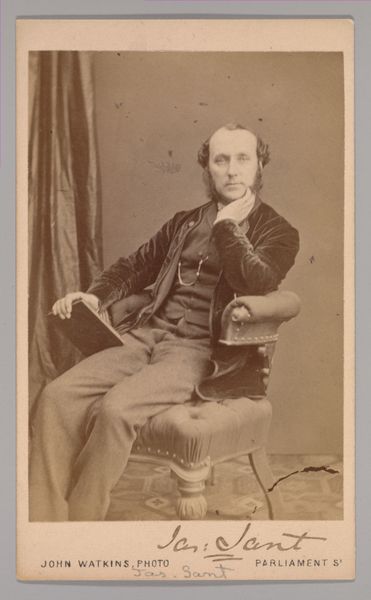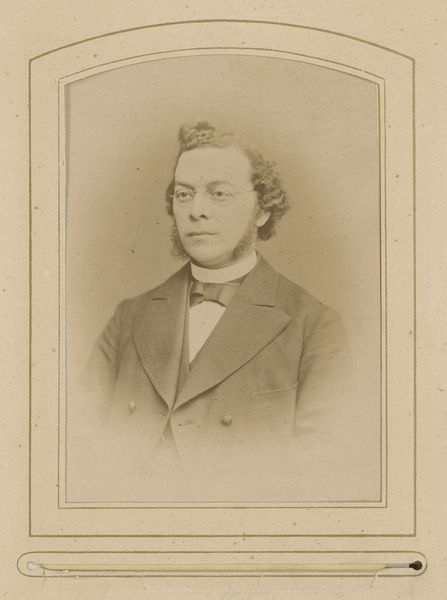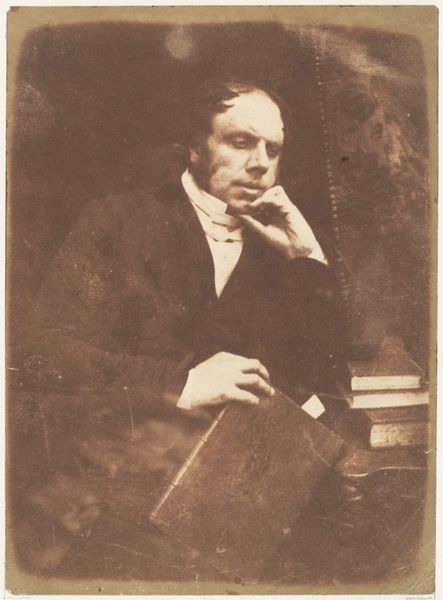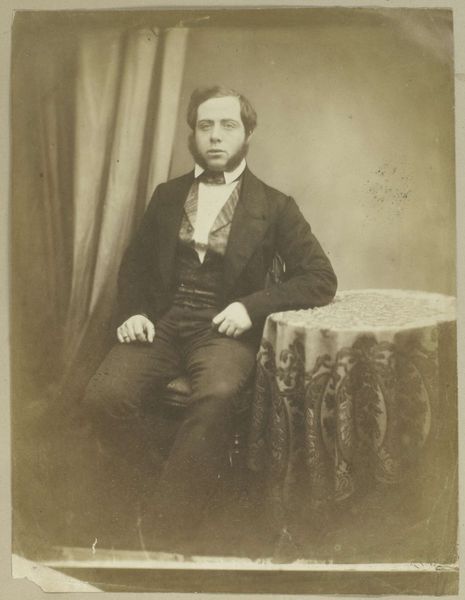![[Man] by Hill and Adamson](/_next/image?url=https%3A%2F%2Fd2w8kbdekdi1gv.cloudfront.net%2FeyJidWNrZXQiOiAiYXJ0ZXJhLWltYWdlcy1idWNrZXQiLCAia2V5IjogImFydHdvcmtzLzYwOGRmNzRmLWNkZTAtNDM5OC04ODIzLTc0N2E5OTlkMDUzNS82MDhkZjc0Zi1jZGUwLTQzOTgtODgyMy03NDdhOTk5ZDA1MzVfZnVsbC5qcGciLCAiZWRpdHMiOiB7InJlc2l6ZSI6IHsid2lkdGgiOiAxOTIwLCAiaGVpZ2h0IjogMTkyMCwgImZpdCI6ICJpbnNpZGUifX19&w=3840&q=75)
photography, gelatin-silver-print
#
portrait
#
photography
#
historical photography
#
romanticism
#
gelatin-silver-print
Copyright: Public Domain
Curator: Immediately, I am struck by the melancholy pervading this gelatin silver print from 1843 to 1847 entitled "[Man]" by Hill and Adamson. The muted sepia tones and the sitter's direct gaze create an air of seriousness. Editor: It does evoke a very somber mood. Considering this work was produced in the mid-19th century, when photography was still a relatively new medium, I find myself wondering about the subject's social context and the power dynamics at play. Curator: Well, it’s worth mentioning that the sitter's dress, particularly the cut of his jacket, waistcoat, and even the knot of his necktie, speaks volumes. Those symbols offer insights into Victorian society and the man's social standing within it. What narrative might these details hold for contemporary viewers? Editor: The formality of the man’s dress clashes intriguingly with the relaxed pose and, in turn, with the melancholic look on his face. This image is produced between 1843 and 1847, following The Great Reform Act of 1832 which was meant to address issues of political representation; I am curious about the kinds of new subjectivities which emerged within an era so radically invested in issues of suffrage and enfranchisement. It's easy to assume a connection to power based solely on outward appearance. Curator: I completely understand your skepticism. Beyond the attire, look at the details in his features. The play of light and shadow emphasizes his eyes, creating an image that resonates deeply. Don't you sense an echo of Romantic ideals in the emphasis on emotion and individual introspection? Editor: Yes, and I'd even argue that the man's expression and averted gaze challenge any simple association between outward markers of class status and a stable subjectivity. In what ways might early photography, even in a portrait like this, invite the interrogation of dominant social codes and identity constructs? Curator: Interesting to consider his image not merely as a record, but as an active participant in shaping the very idea of "Man" itself, especially through emerging ideas of identity. Editor: Precisely. Even as photography seemed to democratize portraiture, this work challenges conventional readings, prompting reflection on how representation interacts with reality. Curator: Thank you. You've helped to underscore how symbols interact in this gelatin silver print to complicate assumptions about representation. Editor: And for that I thank you, for underscoring photography's important role in revealing tensions of nineteenth-century political representation.
Comments
No comments
Be the first to comment and join the conversation on the ultimate creative platform.
